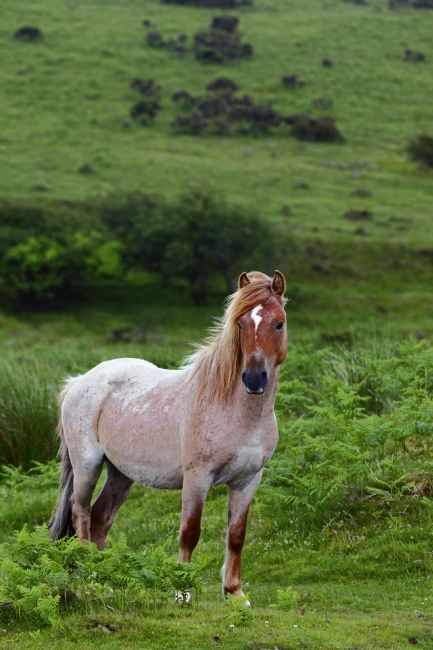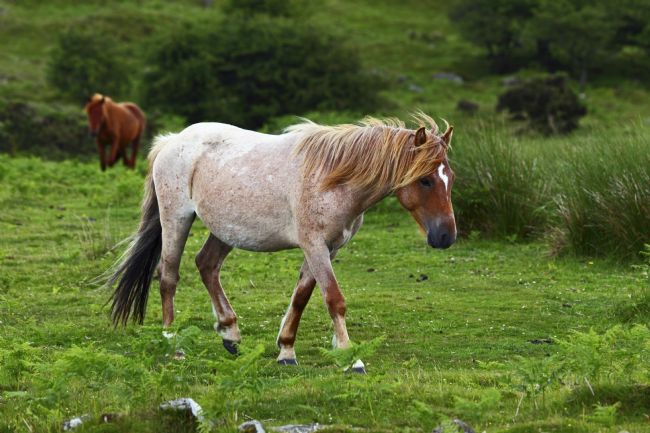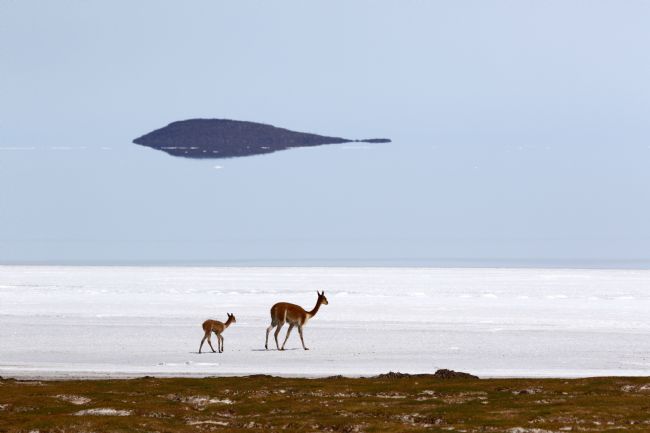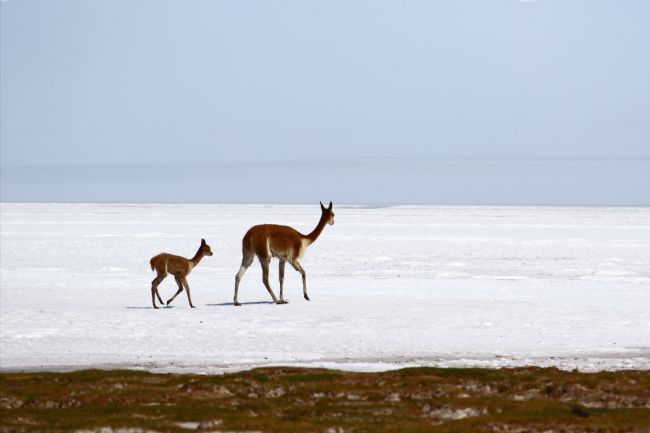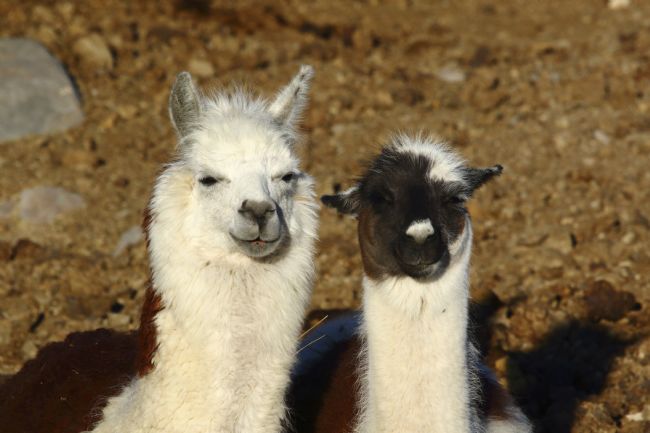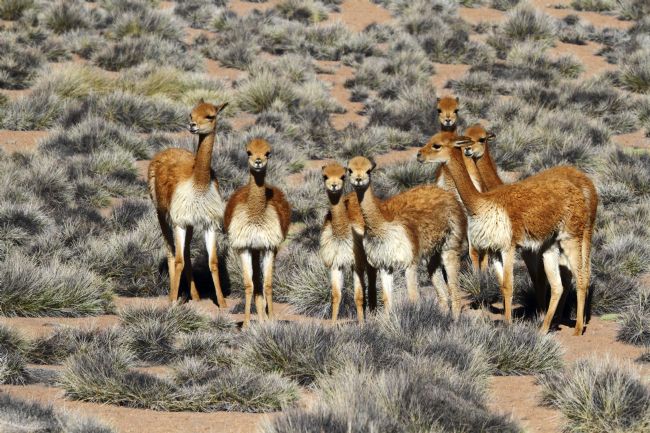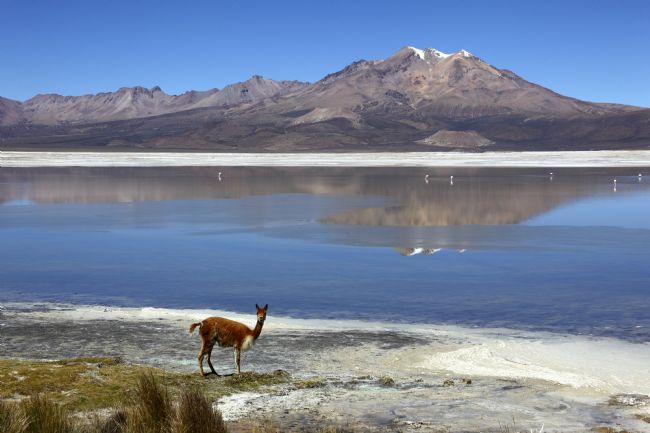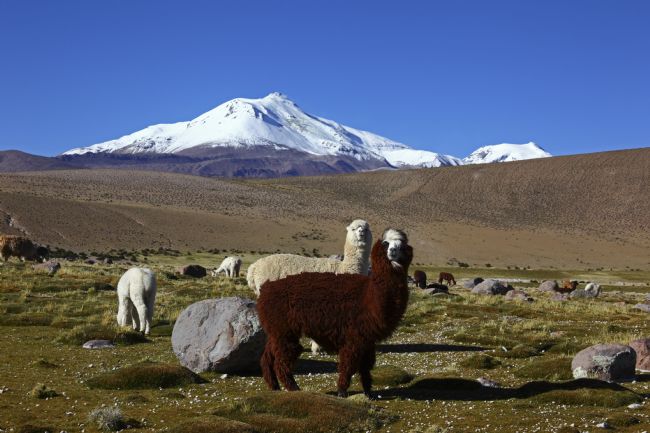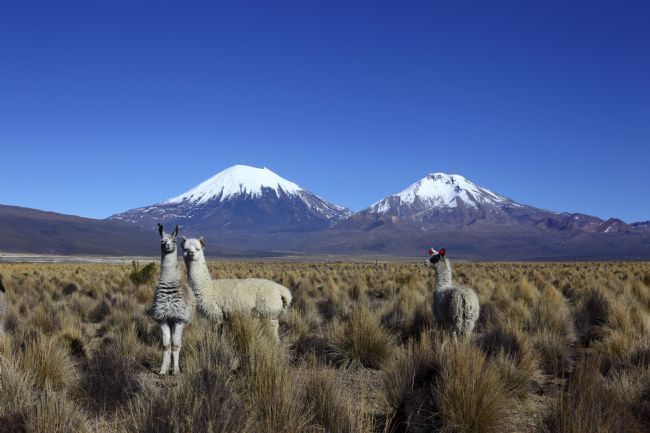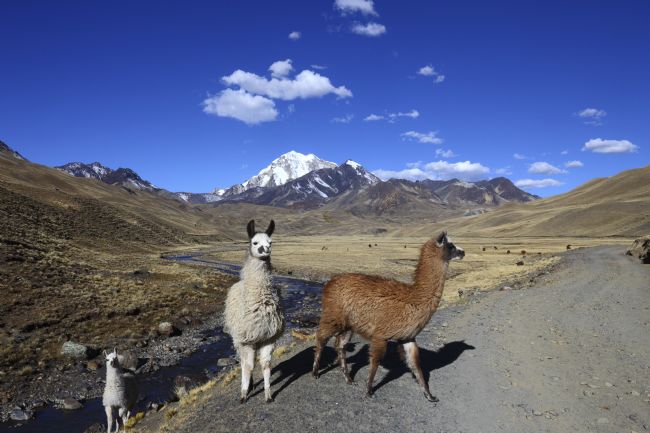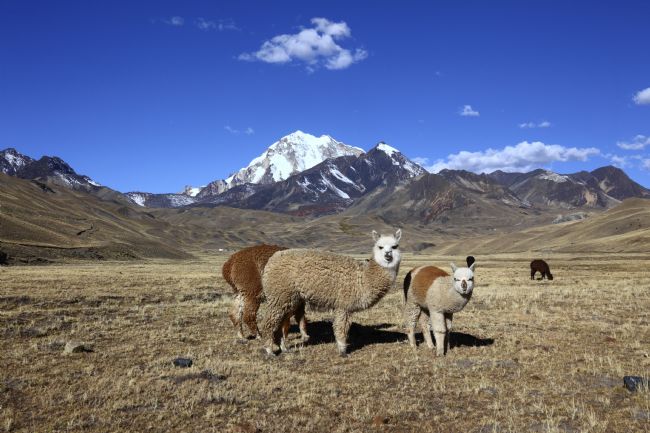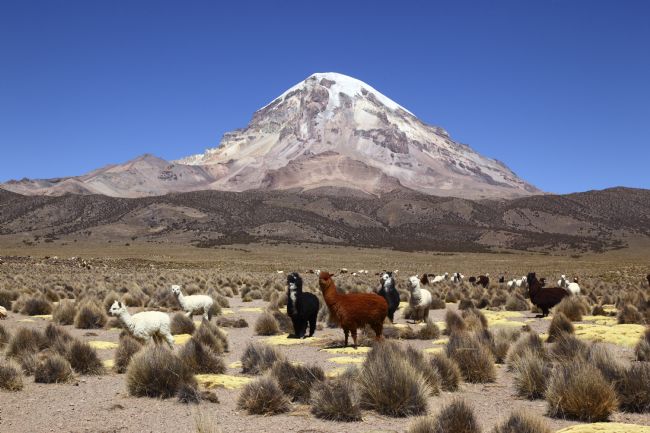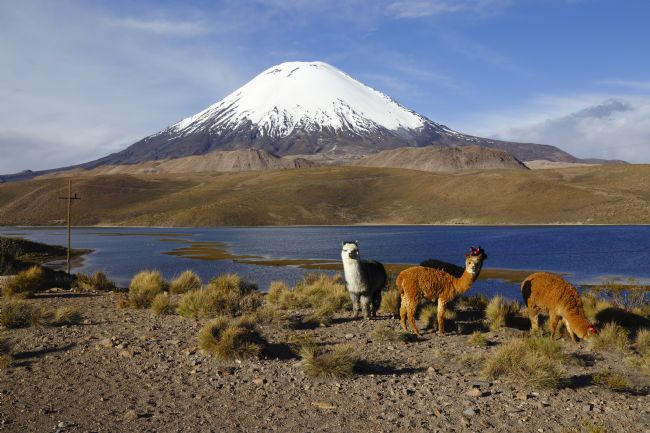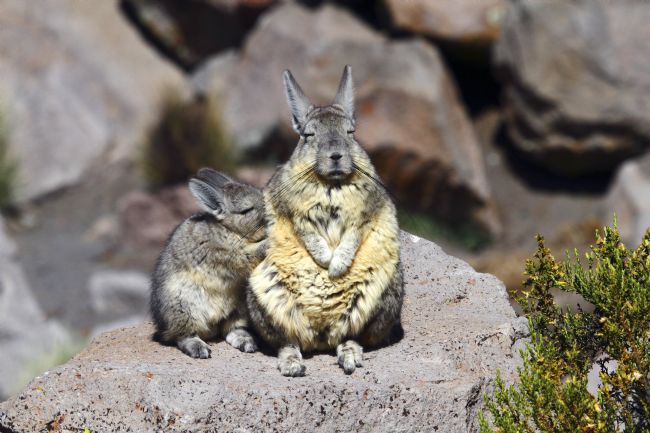A shot of one of the wild ponies that live on Bodmin Moor in Cornwall. The ponies were used in the past as working animals in the tin mines and stone quarries of the region, their descendants now enjoy a more relaxing lifestyle
One of the wild ponies that live on Bodmin Moor in Cornwall enjoys a good scratch on one of the moor's many gorse bushes. The ponies were used in the past as working animals in the tin mines and stone quarries of the region, their descendants now enjoy a more relaxing lifestyle
A shot of one of the wild ponies that live on Bodmin Moor in Cornwall. The ponies were used in the past as working animals in the tin mines and stone quarries of the region, their descendants now enjoy a more relaxing lifestyle.
An adult and young vicuña on the shore of Bolivia's Salar de Uyuni (the world's largest salt flat) in the rainy season. In the background is a small island; the Salar It often floods (to a depth of only a few cm) during the rains which turns the surface into a huge mirror reflecting the skies. Vicuñas (Vicugna vicugna) are the smallest and rarest of South America's wild camelids and native to the barren high altitude grasslands and deserts of the Andes from Peru south to northern Argentina and Chile.
An adult and young vicuña walk along the shore of Bolivia's Salar de Uyuni (the world's largest salt flat) in the rainy season when it often floods (to a depth of only a few cm), turning the surface into a huge mirror reflecting the skies. Vicuñas (Vicugna vicugna) are the smallest and rarest of South America's wild camelids and native to the barren high altitude grasslands and deserts of the Andes from Peru south to northern Argentina and Chile.
A portrait of 2 cute and friendly llamas (Lama glama); taken in Bolivia
A curious group of vicuña (Vicugna vicugna) stop grazing to look at a passing vehicle; a great opportunity for a family portrait! Vicuñas are the smallest and rarest of South America's wild camelids and found in the barren high altitude grasslands and deserts of the Andes from Peru south to northern Argentina and Chile. This image was taken in Lauca National Park in the far north of Chile.
An adult vicuna on the shore of the Salar de Surire salt flat / lake in northern Chile. Vicuñas (Vicugna vicugna) are the smallest and rarest of South America's wild camelids and native to the barren high altitude deserts and steppes of the Andes from Peru from Peru south to northern Argentina and Chile. The peak in the background is the Cerro Chuquiananta volcano (5560m / 18,240ft).
Alpacas (Vicugna pacos) in their high altitude puna grassland habitat near the 6071m /19,918ft high Guallatiri volcano in northern Chile. The volcano is one of the most active in northern Chile. This area is part of the Las Vicunas National Reserve and also the Lauca Biosphere Reserve; recognised by UNESCO in 1981.
An alpaca (Vicugna pacos, centre) and llamas in typical altiplano grassland habitat in Bolivia's Sajama National Park. This shot shows the differences in the head and ears between the 2 animals on the left; llamas are generally more camel-like with much longer ears and are larger (usually more so than in this image). The peaks are the Payachatas ("twin" in the Aymara language) volcanos on the Bolivia / Chile border; individually they are Parinacota (L, 6330m / 20,765ft) and Pomerape (R, 6282 m / 20,610).
Llamas (Lama glama) about to cross a dirt road in the Tuni valley in the Cordillera Real range of the Andes Mountains, Bolivia. In the background is Mt Huayna Potosi (6088m / 19,975ft).
Alpacas (Vicugna pacos) grazing in the Tuni valley in the Cordillera Real range of the Andes Mountains in Bolivia. In the background is Mt Huayna Potosi (6088m / 19,975ft).
Alpacas (Vicugna pacos) crossing the puna grasslands of the high altiplano near the Sajama volcano (6542m / 21; 465ft); Bolivia's highest peak. Alpacas are common throughout the central Andes and bred mainly for their fine; soft wool. In high altitude regions where agriculture is difficult camelids are often the mainstay of the rural economy and herds can be huge.
Alpacas (Vicugna pacos) grazing near the shore of Lake Chungará in Lauca National Park in the far north of Chile. In the background is the perfect cone of the Parinacota volcano (6330m / 20,765ft); said to be the highest symmetrical conical volcano in the world. Lake Chungará was formed by a lava dam during an eruption, at 4517m /14,820ft it is one of the highest large lakes in South America. The Park is also part of the Lauca Biosphere Reserve, recognised by UNESCO in 1981.
A southern viscacha (Lagidium viscacia) and her baby enjoying the early morning sun. Viscachas are often found in boulder fields as high as the snow line in the Andes. They are closely related to the chinchillas and look like a cross between a large rabbit and a squirrel, could easily win prizes for cuteness, and are wonderful to wake up to with your morning tea or coffee!
